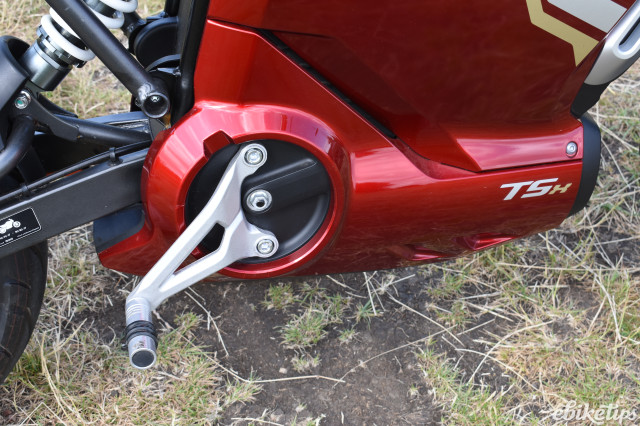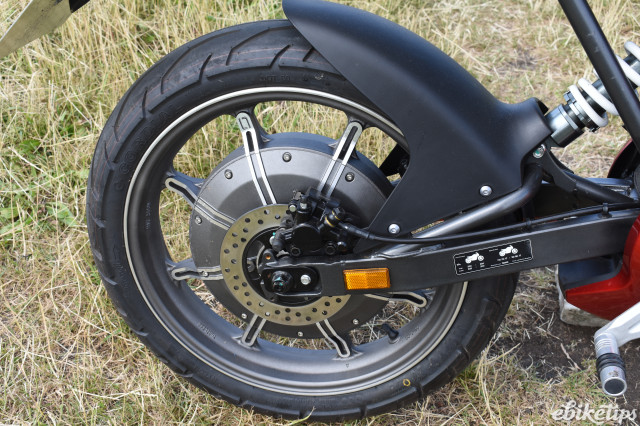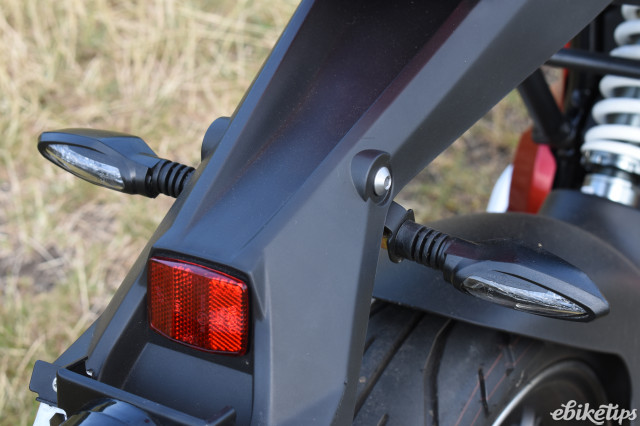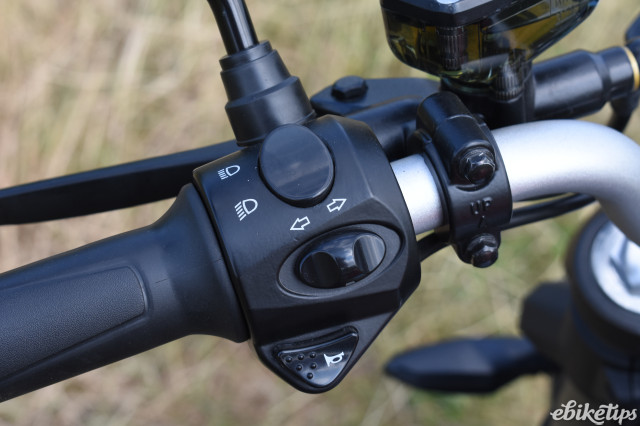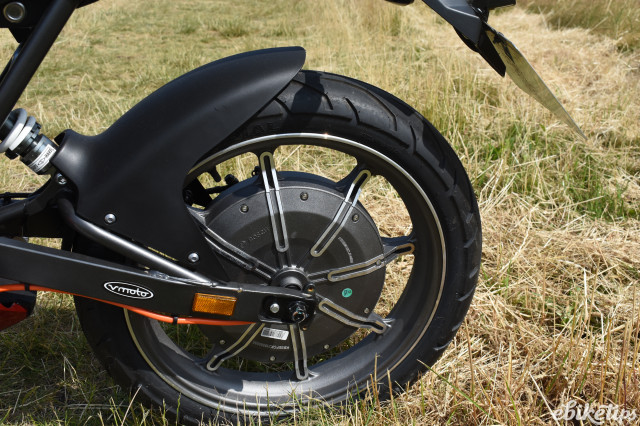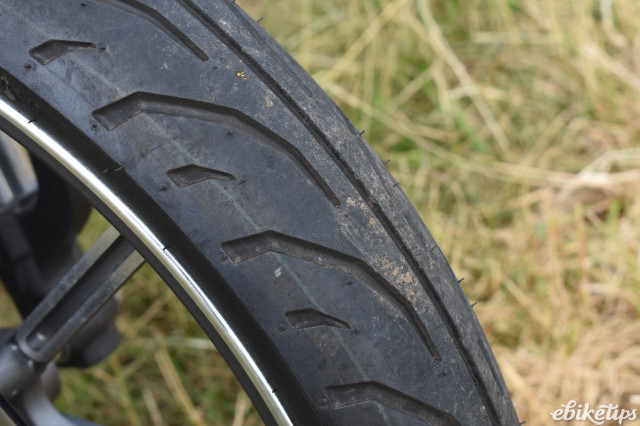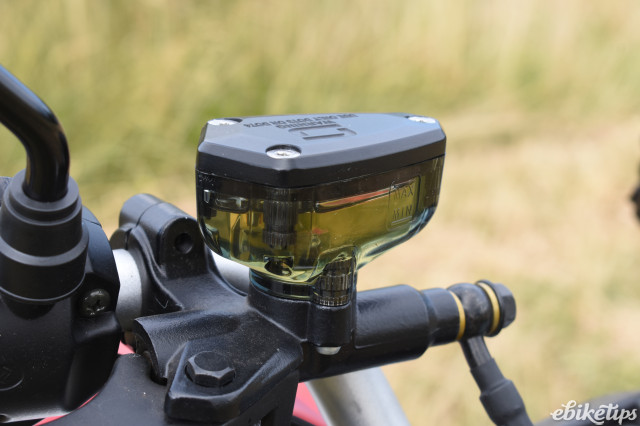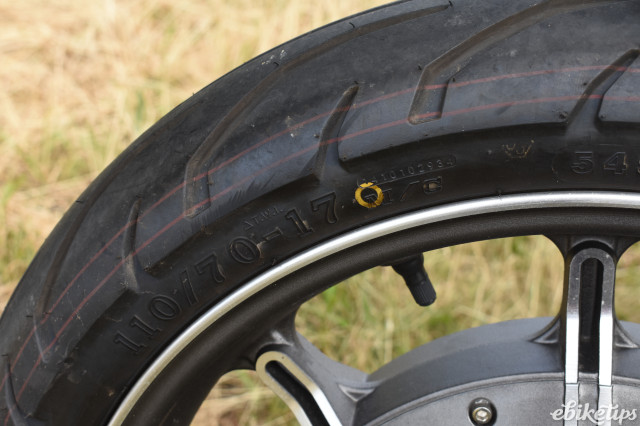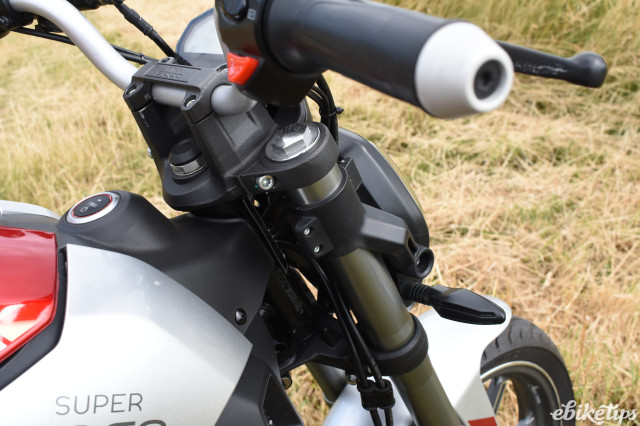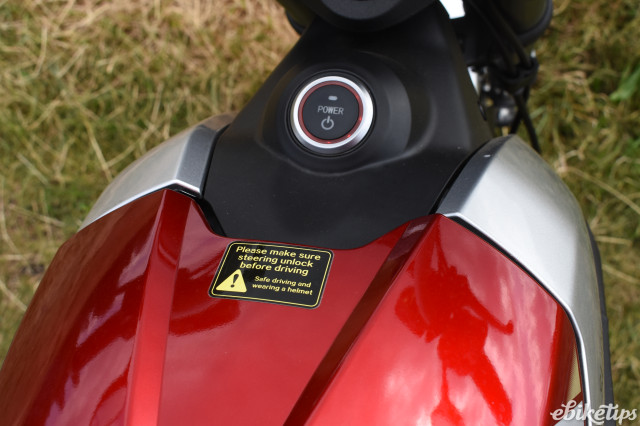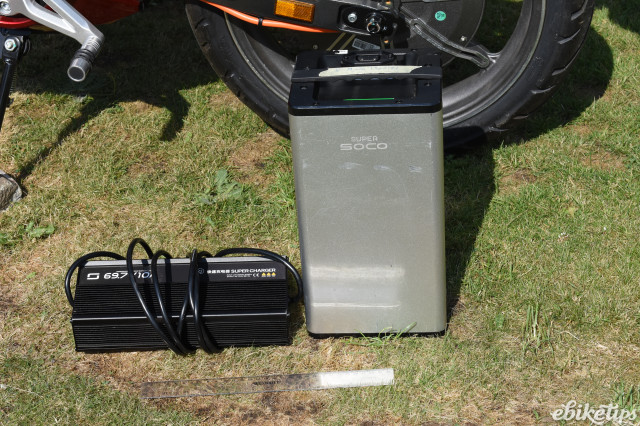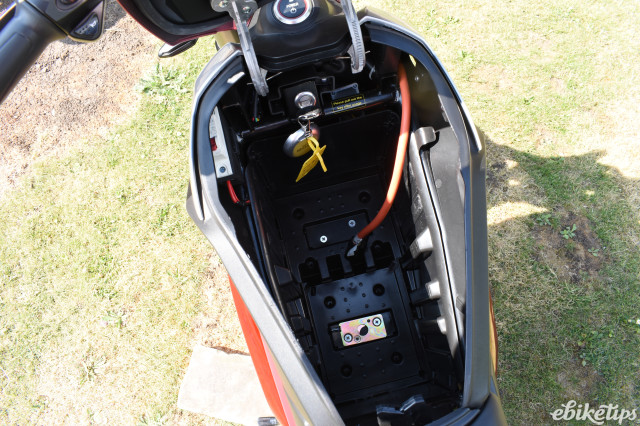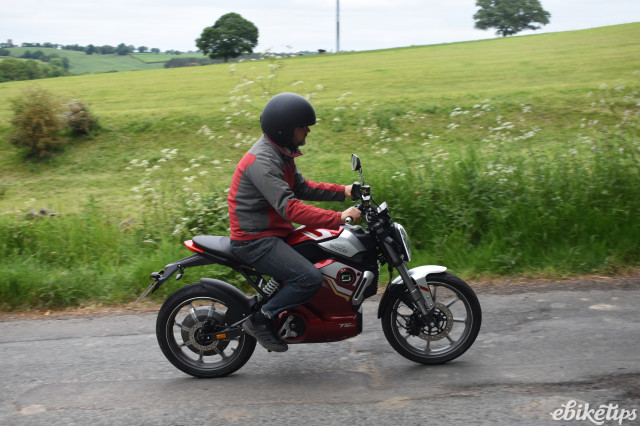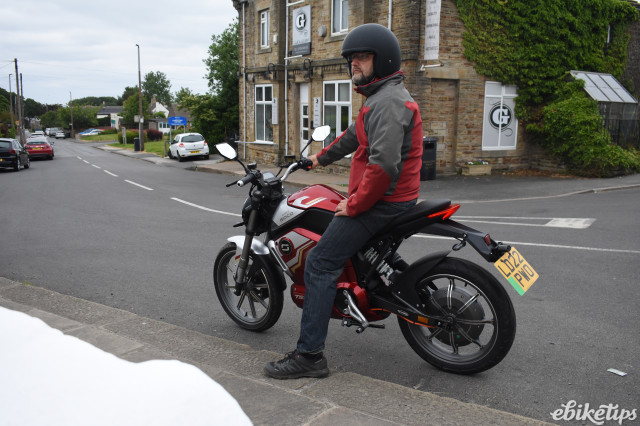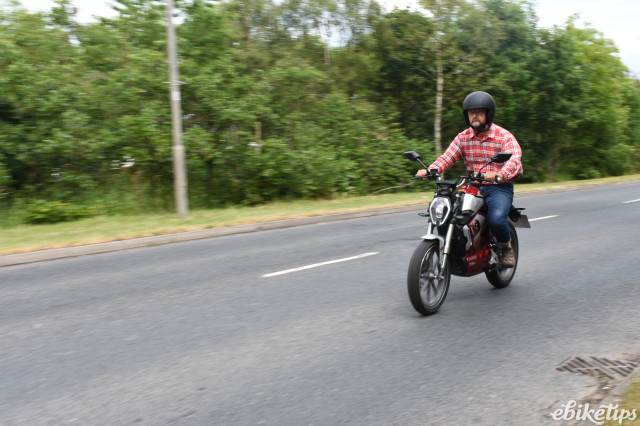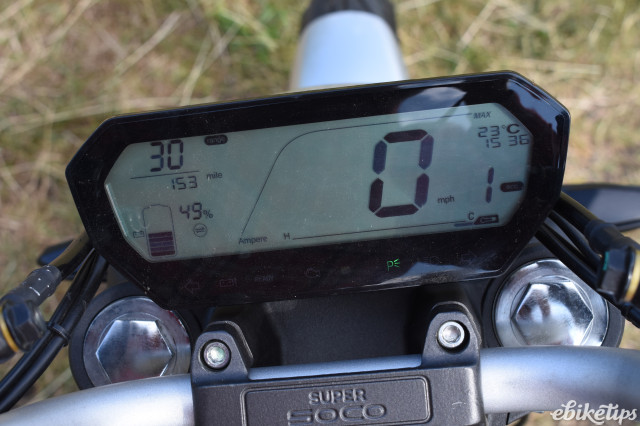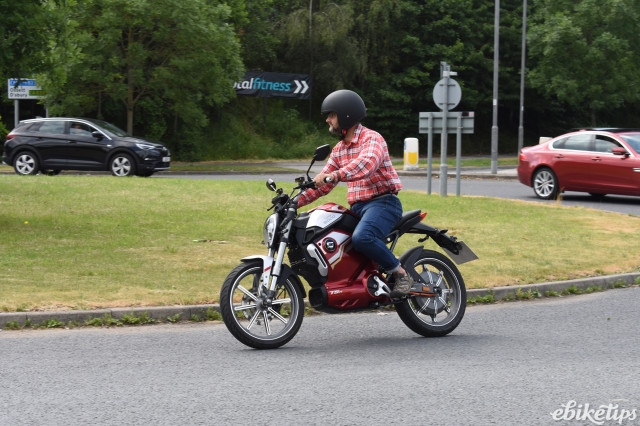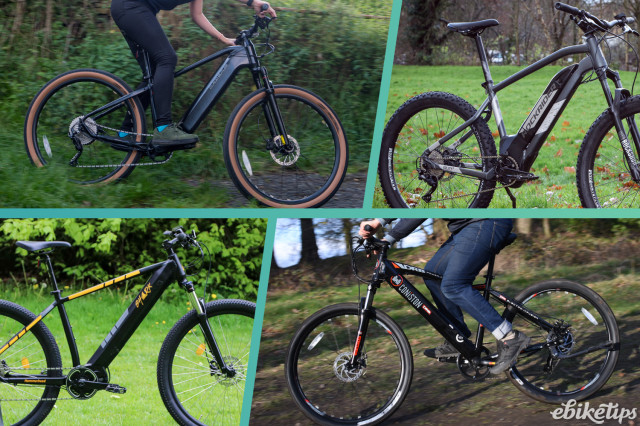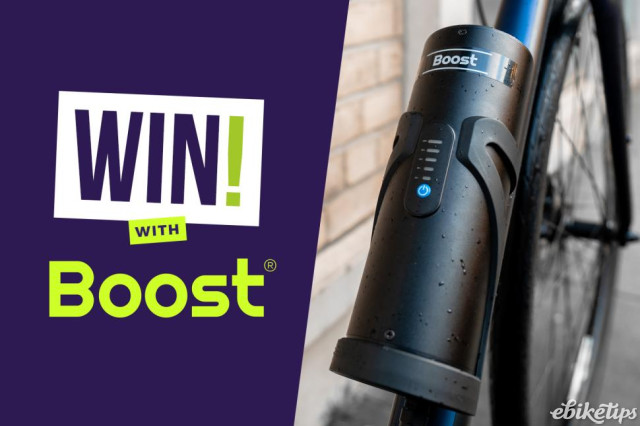Review: Super Soco TSx
Overview
- Smooth and powerful but controlled acceleration
- Easy and intuitive handlebar controls
- Great value for money
- Centre kickstand would be much more stable than the side stand provided
- Softer suspension would make for a smoother ride
We have previously tested Super Soco's 'entry level' CU Mini and higher-powered models from Niu here and here. With a powerful hub motor and the possibility of a double battery, the Super Soco TSx holds out the promise of being the sportiest performing of all the 28mph vehicles we have tested so far. Let's see if it lives up to that promise.
At ebiketips we love L1e-B vehicles, though we hate the official terminology for what are, in effect, 28mph electric two-wheelers - roughly equivalent to petrol-powered 50cc models.
Not only do you get twist throttle power up to nearly twice the speed of an e-bike, you can also ride them legally on the road from the age of 16 (a whole year before you are allowed on the road in a car unsupervised).
Those with existing 'grandad rights' on their licence - which is to say those who passed their driving test before February 1, 2001 - can also just hop on and ride them. More broadly, anyone with a category AM or P on their driving licence can ride L1e-B vehicles as long as they have the requisite insurance/tax/MOT paperwork and wear a correctly certified helmet.
Super Soco TSx - what you get for £2,199
Clearly the Super Soco TSx is aimed at a sportier market than the moped-style machines we've tried previously. With it's sharp looking, aerodynamic fairing and more aggressive seating position, it says, 'I'm not for pootling around town, I just want to go fast'.
With a speed cap of 28mph you obviously won't be going anywhere too fast on the TSx, but the motor spec and power delivery is impressive for this class of 50cc-equivalent electric two-wheeler. You get a single-speed Bosch rear hub motor with a continuous power rating of 1.5kW (six times greater than the legal rating for an e-bike) and a peak power rating of 3kW along with a battery capacity of 1.8kWh which can be doubled if you choose the two battery version.
The frame is markedly different to the 'step-thru' moped-style designs we have tried before but underneath the sporty chic of the bodywork is a similarly heavy carbon-steel frame, although this time it's complemented by an aluminium sub-frame at the rear. And unlike the e-mopeds we've tested in this class which had dual suspension at the rear, the TSx gets a single unit plus USD (upside down) front suspension.
Like many 28mph machines, it has CBS braking - this combined braking system means pulling on either brake lever will actually activate both of the hydraulic disc brakes - a useful safety feature in an emergency and generally a nice thing to have as it promotes a smooth ride.
The very large capacity battery sits in front of your legs rather than inbetween them, but either position is good for maintaining stable and safe handling. At the turn of a key the top of the 'fuel tank' pops up and moving and turning another lock inside the battery compartment unlocks the base of the battery so it can be lifted out for charging - though you'll want to be able and happy to lug the 11kg unit around (or even two batteries of that weight if you opt for the dual battery option).
The key and electronic fob give access to the battery compartment and let you use the battery and steering lock. Once the alarm is turned off, you power up with a large central button and the rest is pretty intuitive. On your right is a throttle and a 'three speed' switch (of which more in the Performance section) with indicators, full beam switch and a horn on your left. The large central display is easy to see and use with speed and % battery capacity the most vital metrics displayed.
Overall it gives the impression of a well thought out e-motorbike that's quick and easy to get used to, but I had a few quibbles.
I found the kickstand simply too short for comfort and generally found myself looking for slightly sloping ground or a flat stone to help stand it up, worried it might topple over (though it looks like it should be easy to change for a longer one).
The rear indicator lights and rear number plate are rather flimsily attached and could easily end up getting damaged by even a fairly small knock (indeed I ended up doing a repair on the number plate attachment bracket).
Finally, the alarm was not loud or long enough to attract significant attention should someone try to move the bike. Overall though, these are simply quibbles and not deal breakers - as we see next, performance was outstanding so these faults look less serious in that light.
Performance
The TSx offers super smooth and quiet acceleration. It doesn't feel like it accelerates as quickly off the mark as some of the higher-powered Niu models we've tested, but in fact our hill test showed that once it's up to speed it has great power in the 15-30mph range and was way ahead of all other 28mph two-wheelers we have tried. Even on 20% gradients it maintained speed in the 15-20mph range, which is pretty impressive.
I estimated range to be between 20 and 40 miles depending on the terrain, how stop-start riding is and rider weight - but this estimate is in warm summer temperatures that are easier on battery range.
This is a good place to mention that 'three-speed' switch. Level one is for low speeds only, level two limits speed to around 20mph and level three is effectively full power up to 28mph. Why bother with this? I thought it could be useful to get maximum range out of the battery - especially that level two setting that could often be used in urban 20mph zones. It means your acceleration and top speed are more muted than in level three, which should save a good bit of battery capacity.
Despite the sporty performance in level three, the TSx felt safe and stable. Whilst it wasn't as comfortable and relaxed a ride as the moped-style competitors I have tried, it certainly wasn't uncomfortable once I had found the optimum seating position. It's just a pity that the design doesn't allow for pillion passengers as there is plenty of oomph to bring one along for the ride and maintain speed up at least moderate hills. Braking was very powerful and nicely modulated and whilst the suspension likely wasn't as plush as systems found on pricier machines, it was pretty adequate for the worst West Yorkshire's heavily trafficked and bumpy roads could throw at it.
Super Soco TSx - weight, power and price compared
Overall weight of the Super Soco TSx including the removable 11.6kg battery is 83.7kg - and if you want to take the charger with you in the storage area - as is pretty likely - that will add another 3kg. That makes the TSx the heaviest electric vehicle we've tested by some way, with other e-mopeds coming in at 50kg (Super Soco CU Mini), 70kg (Niu UQi GT SR) and 72kg (Niu MQi+ Sport).
But that significantly heavier weight and price premium comes with genuine performance benefits as we have seen above. The price too - it's currently reduced to £2,199 - is great value and reflects that even in the midst of inflation pressures there appears to be something of a price war going on in the UK (some of Niu's prices have fallen significantly too I noted).
Even with insurance, registration (currently £55) and 'dealer fees' on top (these vary - some dealers may not charge any), £2,199 looks great value for an electric motorbike that offers speedy, fun and fast urban transport. Note: Super Soco say the current price will only be until 31st July after which it will then go back up by £700 to £2,899.


